Alocasia Frydek is a beautiful and exotic plant that can be found in tropical climates. It is often used for landscaping purposes, and it can be quite striking when used in the right setting. If you are lucky enough to have one of these plants in your garden, or if you are thinking of purchasing one, there are a few things you should know about taking care of it. In this article, we will discuss the basics of Alocasia Frydek care, propagation, and more!
Light Requirements
Alocasia Frydek does best in bright, indirect light. If you live in a tropical climate, this plant can tolerate full sun. However, if you live in an area with hot summers, it is best to give your Alocasia Frydek some afternoon shade.
In terms of artificial lighting, Alocasia Frydeks do well under fluorescent lights. You can also grow them under LED lights, but make sure that the LEDs are not too close to the plant as they can cause leaf burn.[1]
Watering
Alocasia Frydek likes to stay moist, but not wet. The soil should be allowed to dry out a bit in between waterings. If the leaves start to droop, that’s a sign that your plant is thirsty and needs a drink!
To give your Alocasia Frydek the best possible chance at success, use filtered or distilled water. This will help prevent any buildup of minerals in the soil which can cause problems for your plant.
If you’re unsure about how often to water, err on the side of caution and give your plant a little less than it needs. It’s better to be underwater than overwater as too much moisture can lead to problems with rot or fungal diseases.[1]
Choosing Soil For Alocasia Frydek
When it comes to soil, Alocasia Frydek is not fussy. In fact, they will do well in a wide range of soils as long as it is well-draining. One thing to keep in mind, however, is that Alocasia Frydek are heavy feeders. This means that they will need a soil that is nutrient-rich in order to thrive.

One way to ensure that your Alocasia Frydek has the nutrients it needs is to add compost or manure to the soil before planting. You can also add a slow-release fertilizer to the soil at the time of planting. Just be sure not to overdo it on the fertilizer, as this can lead to problems such as leaf burn.
Another important aspect of choosing the right soil for Alocasia Frydek is drainage. As I mentioned before, these plants do not like to sit in wet soil. This can lead to root rot and other problems. To make sure your Alocasia Frydek has good drainage, add gravel or sand to the bottom of the planting hole before adding the plant.[1]
Temperature
Alocasia Frydek prefers warm weather and humidity. If you live in a colder climate, you can grow your plant indoors near a humidifier or south-facing window. I would recommend keeping your Alocasia Frydek between 65-85 degrees Fahrenheit (18-29 degrees Celsius).[1]
Fertilizing Alocasia Frydek
Alocasia Frydek are heavy feeders and need to be fertilized regularly. A good rule of thumb is to fertilize every other week during the growing season and every month during the winter. I like to use a balanced fertilizer like 20-20-20 or 15-15-15. You can also use a slow release fertilizer, just make sure to follow the directions on the package.
When it comes to watering Alocasia Frydek, it’s important to remember that they prefer their roots to be somewhat moist but not soggy. Allow the top couple inches of soil to dry out in between waterings. If you notice your plant starting to wilt, that’s a sign that it needs more water.[1]
Humidity
If the air in your home is particularly dry, you can increase the humidity around your plant by grouping it with other plants, using a pebble tray, or misting the leaves occasionally.[1]
Pruning
Pruning isn’t necessary for Alocasia Frydek, but if you want to control its size, you can cut the leaves back. Be sure to use gloves when handling this plant, as the sap can cause skin irritation.
To propagate Alocasia Frydek, divide the rhizome in spring or early summer. Replant each section in moist soil and keep it warm and humid until new growth appears. You can also propagate from seed, although it’s a slower process. Sow seeds in a well-draining potting mix and keep them warm and moist until they germinate.[1]
Repotting
It’s best to report to Alocasia Frydek every other year or so, depending on the size of the pot and how quickly it seems to be outgrowing it. Be careful when handling the roots, as they are delicate and can be easily damaged. When repotting, use a well-draining potting mix and water thoroughly after transplanting.

Alocasia Frydek are fast growers, so they will need regular fertilizing to keep them healthy and looking their best. Use a balanced fertilizer monthly during the growing season, diluted to half strength. Reduce frequency to every other month in winter when growth slows down. Water regularly, keeping the soil moist but not soggy.
Common Pests & Diseases
Spider Mites
You can also try tapping a leaf over a white sheet of paper; if spider mites are present, you’ll see small moving dots.
To get rid of spider mites, start by spraying your plant with water to dislodge them. You can also use an insecticidal soap or neem oil. If those don’t work, you may need to resort to chemical pesticides.[3]
Droopy Leaves
If your Alocasia Frydek’s leaves are looking a little droopy, don’t worry – this is normal! They will perk up when they get some water. Be sure to give them a good drink every week or so, and mist them regularly if you can.
If your plant is really wilting, it may be getting too much sun. Move it to a spot with indirect light and see if that helps.[3]
Leaves Turning Yellow
One of the most common issues people have with their Alocasia Frydek is that the leaves start to turn yellow. This can be caused by a few different things, so it’s important to try and figure out what the problem is so you can fix it.
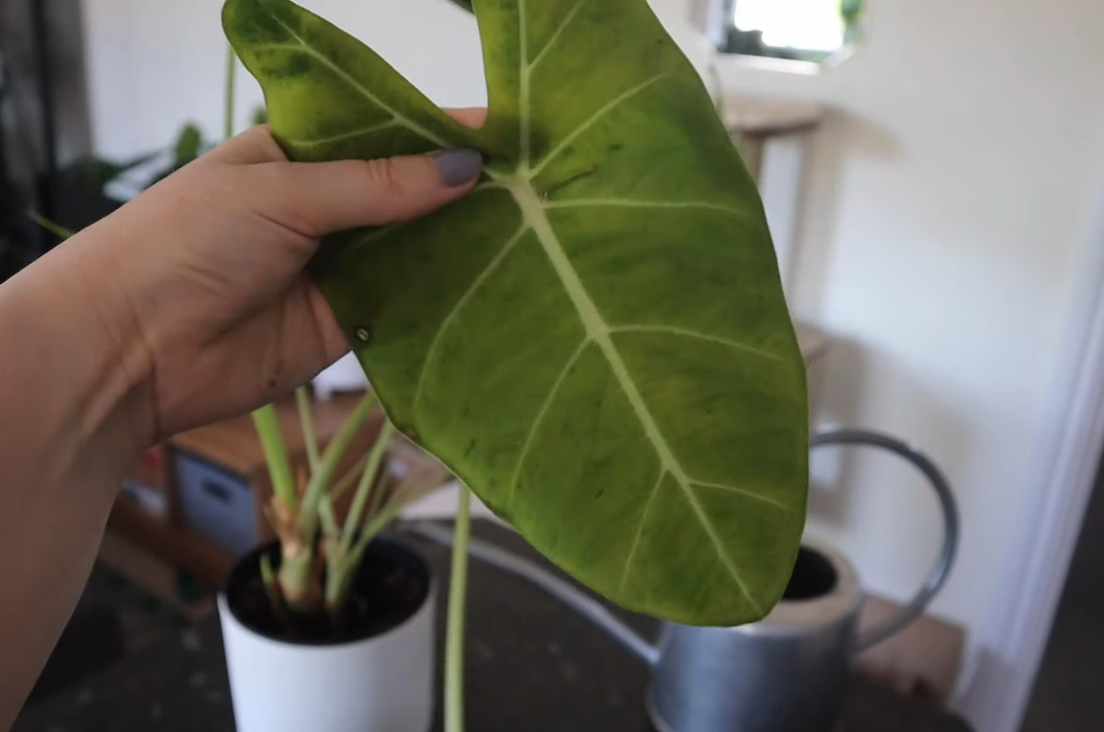
The first thing you should check is the amount of light your plant is getting. If it’s not getting enough light, the leaves will start to turn yellow. Make sure you’re giving your plant plenty of bright, indirect sunlight.
If the light isn’t the issue, then it could be too much water or not enough nutrients. Yellowing leaves can also be a sign of nutrient deficiency, so make sure you’re fertilizing your plant regularly. If you think you’re giving your plant enough water but the leaves are still yellowing, try letting the soil dry out a bit before watering again.[3]
Alocasias Going Dormant
If your Alocasia isn’t looking as perky as usual, don’t panic! It’s probably just going dormant for the winter. During this time, it’s best to cut back on watering and fertilizing. Let the soil dry out completely between waterings, and stop fertilizing altogether. Your Alocasia will likely lose some leaves during this time, but it will bounce back in spring.
If you live in a particularly cold climate, you may want to consider bringing your Alocasia indoors for the winter. It can be tricky to care for an Alocasia indoors, but if you have a green thumb and are up for the challenge, go for it! Just make sure to give it plenty of bright, indirect light and keep an eye on its watering needs.[3]
Losing Leaves
One common issue with Alocasia Frydek is that its leaves may start to yellow and drop off. This can be due to a number of reasons, including:
- too much or too little water
- not enough humidity in the air
- being pot bound (i.e. the roots are constricted and need more space)
- exposure to drafts or sudden temperature changes
If you notice your Alocasia Frydek starting to lose leaves, take a close look at its environment and see if you can identify the problem. Once you’ve figured out what’s causing the leaf loss, take steps to correct the issue and your plant should start to recover.[4]
Toxicity
If you suspect that someone has ingested any part of this plant, it is important to seek medical attention immediately. In addition to being poisonous, this plant can also cause skin irritation or allergic reactions in some people. If you are handling the plant, be sure to wear gloves and long sleeves to protect your skin.[4]
Overwintering
If you live in an area with cold winters, you’ll need to take some extra care of your Alocasia during the winter months. The good news is that it’s not difficult to overwinter your Alocasia indoors. Here are a few tips:
- Bring your Alocasia inside before the first frost.
- Place your Alocasia in a bright, sunny spot near a window.
- Water your Alocasia regularly, making sure the soil stays moist but not soggy.
- Apply a light fertilizer every month or so.[2]
With just a little bit of extra care, you can easily overwinter your Alocasia and enjoy its beautiful foliage all year long!
About the term African Mask
The Alocasia Frydek is a plant that’s native to Malaysia. It’s also commonly called the African mask plant because of its large, glossy leaves that have contrasting white veins running through them. The leaves are what make this plant so popular because they add a tropical touch to any home or office.
Alocasias are part of the Araceae family which contains about 3300 species of flowering plants. Most of these plants are found in humid tropical areas like Southeast Asia but some, like the Alocasia Frydek, are native to more temperate climates.[4]
Alocasia Frydek Bulb
Alocasia Frydek is a beautiful houseplant that’s easy to care for. With its large, glossy leaves, it makes a real statement in any room.
If you’re thinking of adding an Alocasia Frydek to your collection, here’s what you need to know about care and propagation.
Alocasia Frydek is native to Southeast Asia and is related to the Colocasia plant. It’s also sometimes called Alocasia Black Velvet or Alocasia Polly.

The plant grows from a bulb and can reach up to three feet tall. The leaves are dark green with prominent veins. They’re heart-shaped and can be up to 18 inches long! The leaf margins are often wavy or ruffled.[4]
Alocasia Frydek Flowering
One of the most beautiful things about Alocasia Frydek is its flowering. The flowers are large, white, and fragrant. They bloom in late summer and early fall, and they last for several weeks. The best time to see them is in September or October.
When the flowers bloom, they attract bees, butterflies, and hummingbirds. This is one of the reasons why Alocasia Frydek is such a popular plant. Not only does it look beautiful, but it also attracts wildlife to your garden.
If you want to see the flowers up close, you can cut them off the plant and bring them indoors. They make great cut flowers and will last for at least a week in a vase.[4]

Alocasia Frydek Outdoor Care
When it comes to outdoor care, Alocasia Frydek is a bit more particular than your average houseplant. In its native habitat of Southeast Asia, Alocasia Frydek grows under the canopy of rainforests. This means that it’s used to filtered light and high humidity.
If you live in an area with a hot summer climate, it’s best to grow Alocasia Frydek in partial shade. When the temperatures start to cool down in fall, you can move your plant to a spot that gets full sun. Just make sure to bring it back indoors before the first frost hits.
Alocasia Frydek likes high humidity, so it’s a good idea to mist your plant regularly or set it on a pebble tray. If you live in a particularly dry climate, you may need to use a humidifier to keep your Alocasia Frydek happy.
Fertilize your Alocasia Frydek once a month during the growing season with a balanced houseplant fertilizer diluted by half. In the winter, you can skip fertilizing altogether.[4]
Alocasia Frydek Propagation
Alocasia Frydek is a beautiful houseplant that’s easy to care for. But what if you want more of them? Here’s everything you need to know about propagating Alocasia Frydek.
To propagate your Alocasia Frydek, you’ll need to take a leaf cutting. First, choose a healthy leaf from the plant and cut it off at the base with a sharp knife. Next, cut the leaf into pieces, making sure each piece has at least one vein. Finally, plant the pieces in a moist potting mix and keep them warm and humid. In no time, you’ll have a new Alocasia Frydek![4]
Propagating Alocasia Frydek is easy and a great way to get more of these beautiful plants.
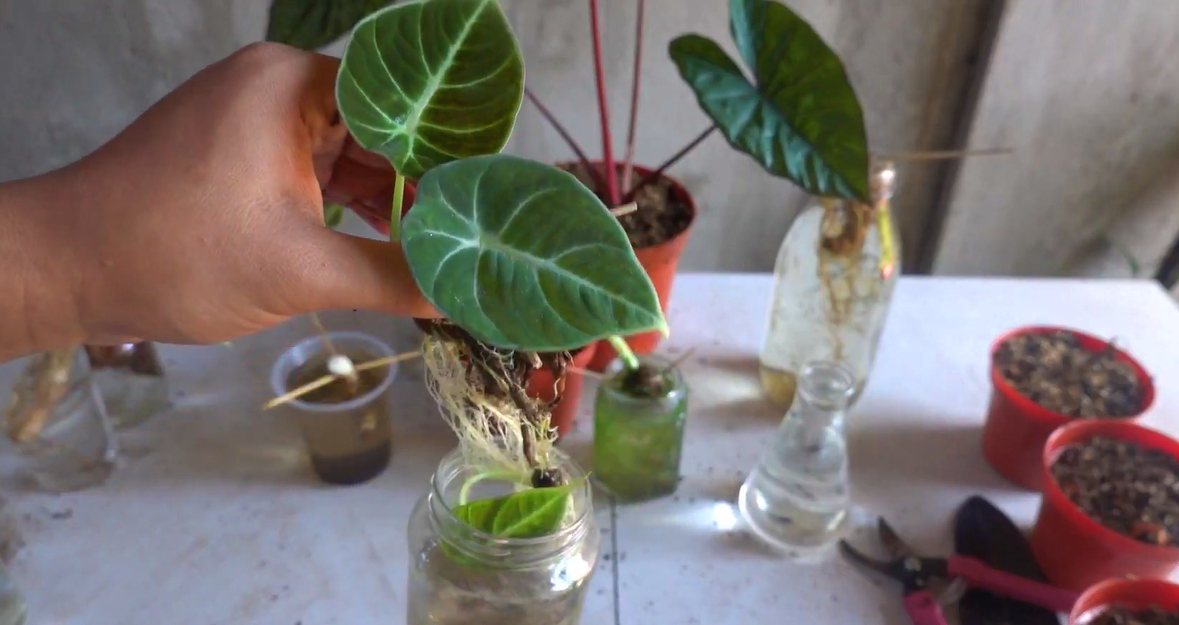
Propagation by division
Alocasia Frydek can be propagated by division in late spring or early summer. Using a sharp knife, carefully remove offsets from around the edge of the pot and replant them in fresh potting mix. Keep the soil moist but not soggy and provide bright, indirect light until new growth appears.
Division is also a good method for controlling the size of your plant. If you find that your Alocasia Frydek is getting too big for its pot, you can divide it into two or three smaller plants. Just be sure to use a sharp knife to avoid damaging the roots.[4]
Propagation using bulbs
Alocasia Frydek can be propagated using bulbs. This method is best done in the spring or summer.
To propagate using bulbs, first, fill a pot with a well-draining potting mix. Next, create holes in the potting mix for the bulbs. Plant the bulbs so that the nose is pointing up and cover with more potting mix. Water well and place in a bright spot but out of direct sunlight.
Bulbs will sprout within a few weeks to a month. Once they have sprouted, you can begin to fertilize them every two weeks with a diluted liquid fertilizer. When the weather warms up, you can transplant your Alocasia Frydek outdoors. Be sure to harden them off first by slowly acclimating them to the outdoors.[4]
Alocasia Frydek vs. Alocasia Polly
Alocasia Frydek is often confused with Alocasia Polly because they share many similarities. They are both tropical evergreen perennials that are native to Southeast Asia, and they both have large, glossy green leaves. However, there are some key differences between the two plants. Alocasia Frydek has smaller leaves than Alocasia Polly, and its leaves are more deeply veined. The veins on Alocasia Polly’s leaves are less pronounced. In addition, Alocasia Frydek produces white flowers, while Alocasia Polly produces yellow flowers.
Alocasia Frydek is a beautiful plant that makes a great addition to any garden. If you’re looking for a plant that is easy to care for and doesn’t require much maintenance, then Alocasia Frydek is the plant for you. Keep reading to learn more about how to care for your Alocasia Frydek.[4]
FAQ
Does Alocasia Frydek like to be root bound?
To repot, gently remove the plant from its current pot and loosen any compacted roots before replanting in a new pot that is only slightly larger than the previous one. Be sure to use fresh, well-draining potting mix and water thoroughly after repotting.
Is Alocasia Frydek hard to grow?
No, Alocasia Frydek is not difficult to grow. With the proper care, it can thrive indoors or outdoors.
Alocasia Frydek is a tropical plant that originates from Southeast Asia. It’s a member of the Araceae family which also includes Philodendron and Anthurium. The plant gets its common name, Elephant Ear, from its large shield-shaped leaves that can grow up to 18 inches long and 12 inches wide. The leaves are dark green with white veins running throughout. When mature, Alocasia Frydek produces small yellow flowers that bloom in the summertime.
Should I mist Alocasia Frydek?
Yes, you should mist your Alocasia Frydek regularly. Misting helps to raise the humidity around the plant, which is beneficial since this plant originates from tropical regions. Try to mist your Alocasia at least once a day, and more if you can.
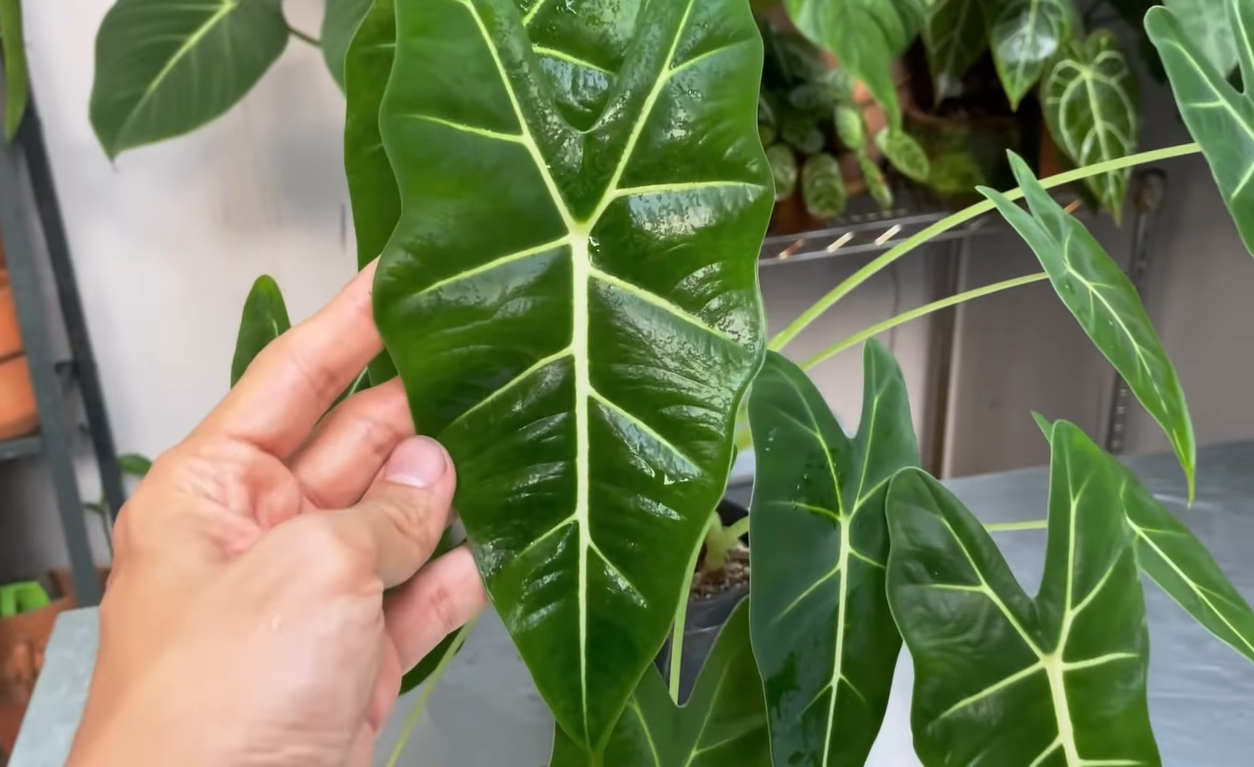
If you notice that the leaves of your Alocasia are drooping or curling, it’s a sign that the air around it is too dry. Make sure to increase the frequency of your misting sessions in order to provide enough moisture for the plant.
How do you strengthen Alocasia?
When it comes to Alocasia care, one of the most important things you can do is to make sure that your plant is getting enough humidity. These plants come from tropical areas, so they prefer a humid environment. You can increase the humidity around your Alocasia by placing it on a pebble tray or by using a humidifier.
It’s also important to give your Alocasia plenty of bright, indirect light. If you live in a particularly sunny area, you may need to provide some dappled shade for your plant during the hottest hours of the day.
How fast does Frydek grow?
Frydek is a fast grower and can easily add several inches of growth per year. If you want to keep it small, you can simply pinch back the tips of the leaves.
To encourage even faster growth (and get some bigger leaves), you can apply a weak fertilizer solution every couple of months during the growing season. Just be careful not to overdo it, as too much fertilizer can burn the roots.
If you live in a warm climate, Frydek will probably grow all year round. In cooler climates, it will go dormant during winter and then start growing again in spring.
What does an overwatered Alocasia look like?
An overwatered Alocasia will have wilted, yellow leaves and stems. The roots may also be rotting.
If you think your Alocasia is overwatered, the best course of action is to remove it from the pot and check the roots. If they are mushy or black, then the plant is probably beyond saving. However, if the roots are white and firm, you may be able to save it by repotting in dryer soil.
Useful Video: Alocasia micholitziana ‘Frydek’ care and propagation
Conclusion
We hope you found this article helpful. Alocasia Frydek is a beautiful plant that can be a great addition to any home. With proper care, it can thrive for many years.
If you have any further questions about Alocasia Frydek care or propagation, feel free to leave a comment below and we will be happy to help!
Thanks for reading!
References:
- https://smartgardenguide.com/alocasia-frydek-care/
- https://www.thespruce.com/alocasia-frydek-growing-guide-5225402
- https://www.ohiotropics.com/2019/12/19/alocasia-frydek-care/
- https://plantophiles.com/plant-care/alocasia-frydek-african-mask-care-and-propagation/




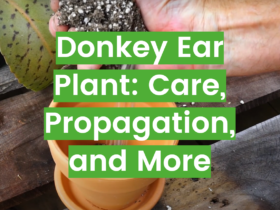
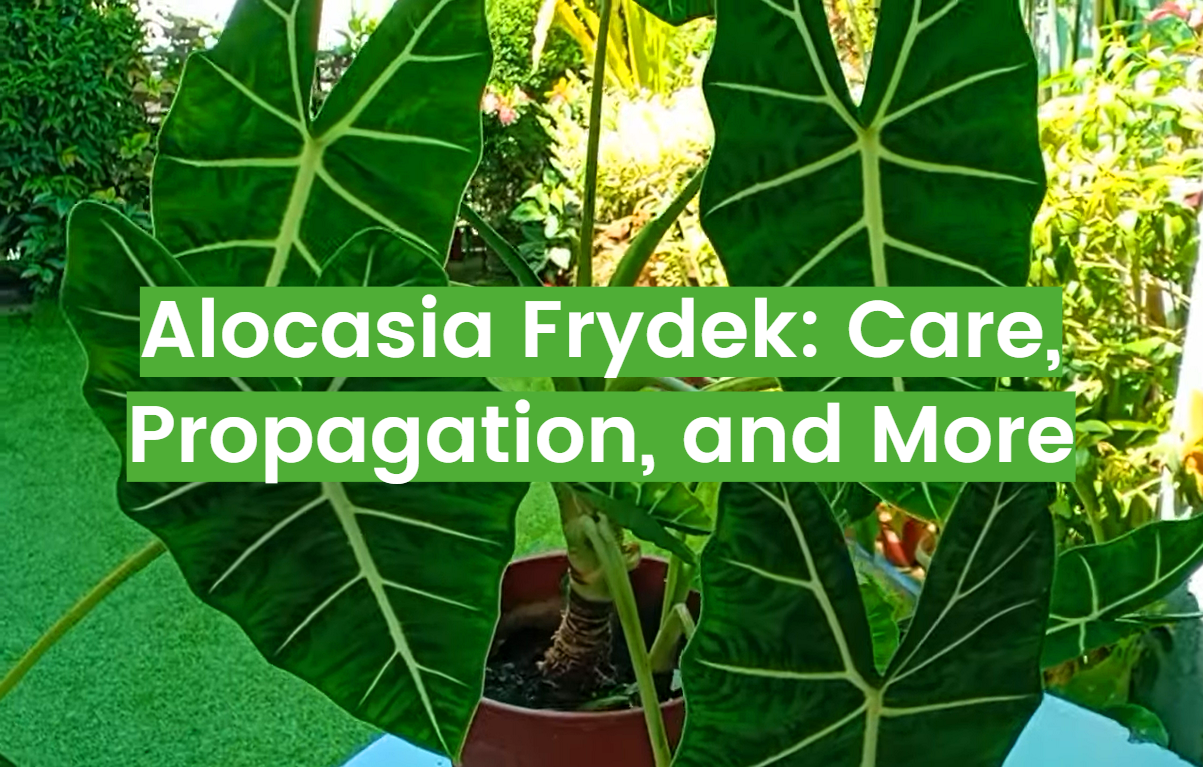

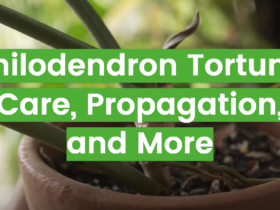


Leave a Review